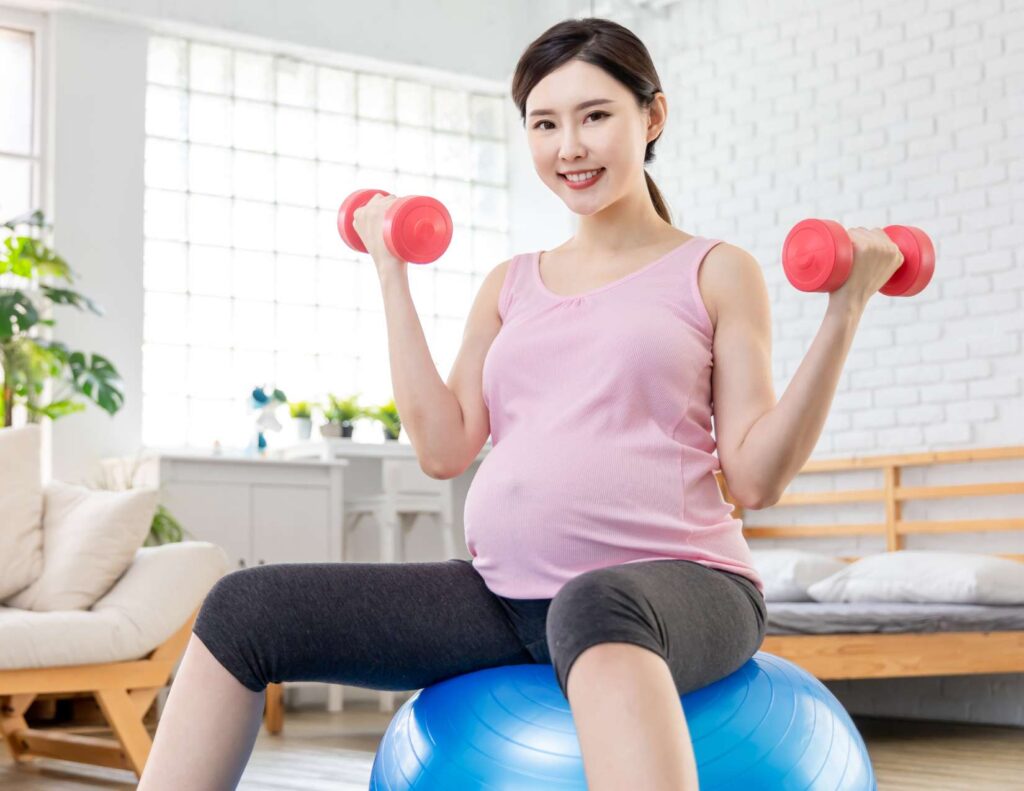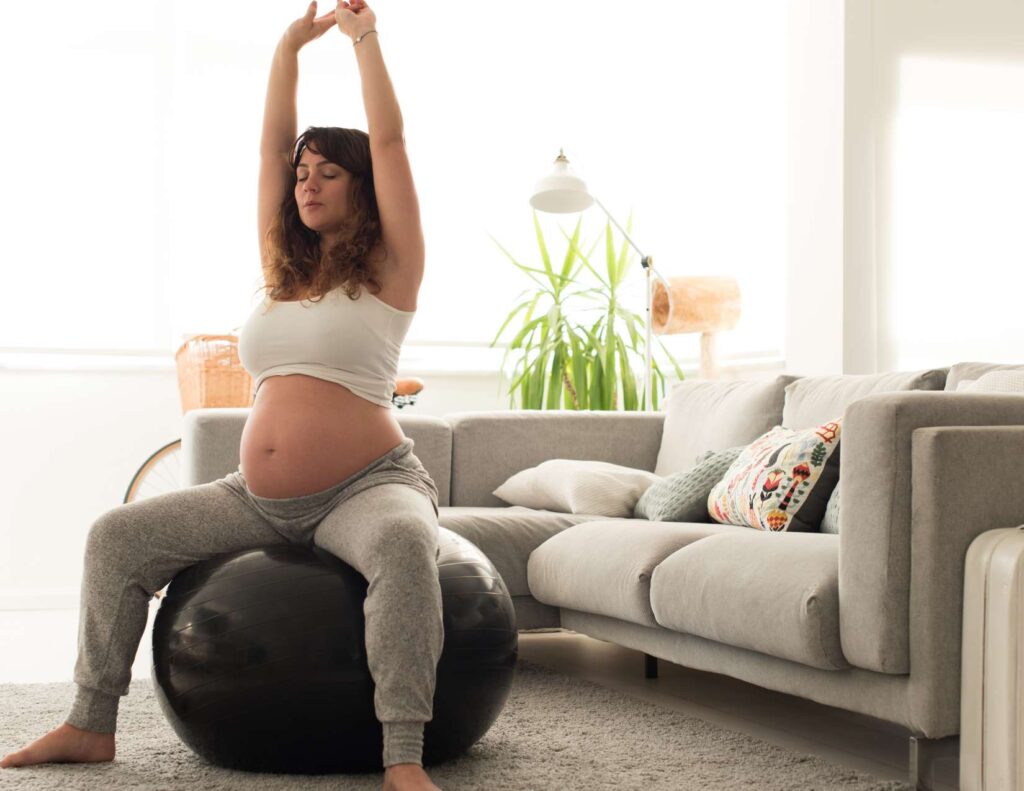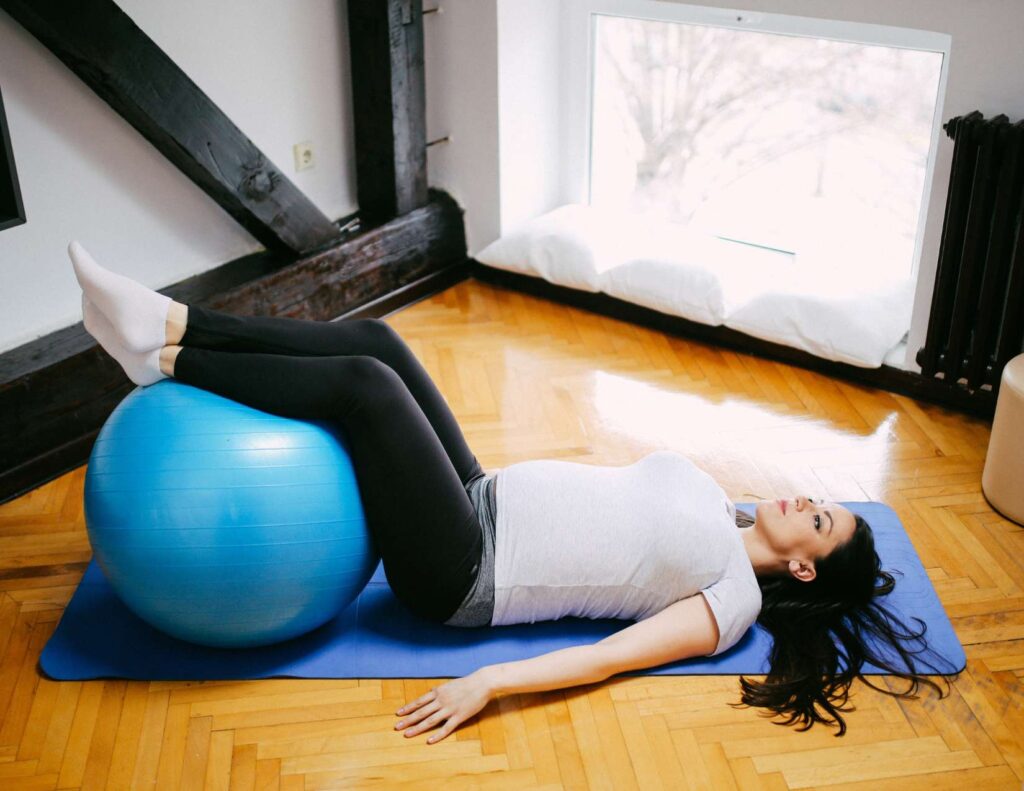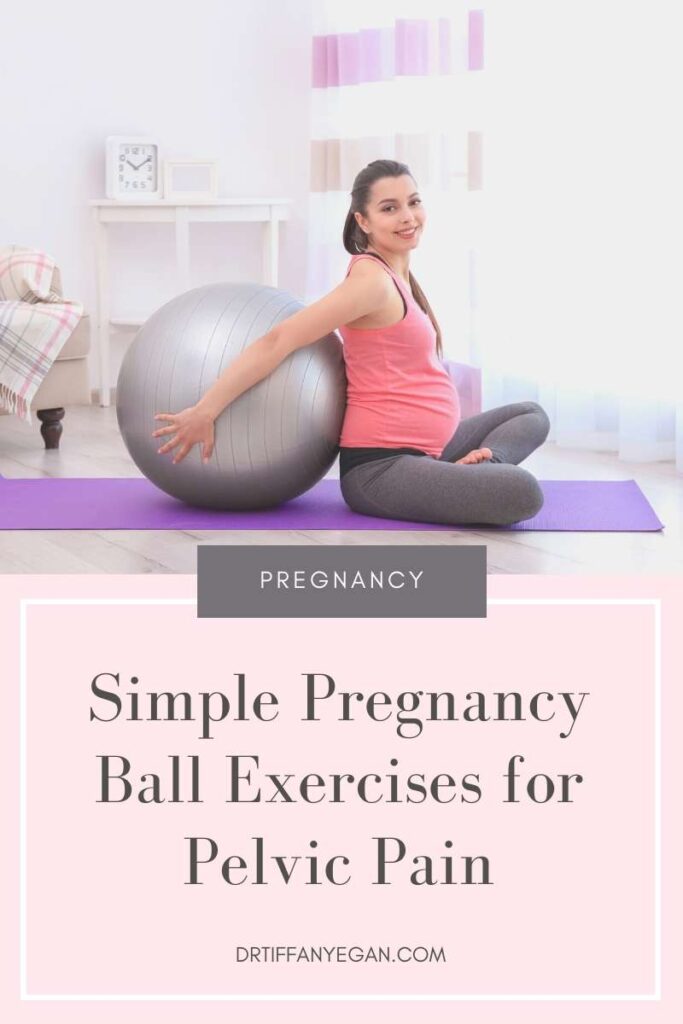The Best Pregnancy Ball Exercises for Pelvic Pain
As a pregnant woman, you may experience a variety of discomforts, including pelvic pain. This pain can make it difficult to move around and perform daily tasks. Fortunately, pregnancy ball exercises can help relieve pelvic pain and improve your overall comfort during pregnancy.
In this article, I will discuss the benefits of using a pregnancy ball for pelvic pain relief, how to choose the right size pregnancy ball, precautions to take before starting pregnancy ball exercises, and the best pregnancy ball exercises for pelvic pain relief!

Table of Contents
Understanding Pelvic Pain During Pregnancy
Pelvic pain is a common discomfort that many pregnant women experience. It can be caused by a variety of factors, including hormonal changes, weight gain, and changes in posture. As your baby grows, the weight and pressure on your pelvic region can also increase, which can lead to pain and discomfort. This pain may be felt in the front of your pelvis at the symphysis pubis joint, in your lower back, sacrum, or in your hips.
Pregnancy-related pelvic pain conditions include Pelvic Girdle Pain (PGP) and Symphysis Pubis Dysfunction (SPD). PGP is a collection of uncomfortable symptoms caused by a misalignment of the pelvic joints (such as SI joint pain during pregnancy), while SPD is caused by instability and excessive movement of the pubic symphysis joint at the front of the pelvis. Both can cause pain in the back, hips, and groin area including tailbone pain during pregnancy. Piriformis syndrome during pregnancy and sciatica during pregnancy can also be a possible cause of pelvic pain.
It’s important to note that not all pelvic pain during pregnancy is normal. If you experience severe or persistent pain, or if you have any bleeding or discharge, you should contact your healthcare provider immediately. Additionally, if your pelvic pain is accompanied by contractions or a decrease in fetal movement, you should seek medical attention right away.

Benefits of Pregnancy Ball Exercises for Pelvic Pain Relief
One of the best ways to relieve pelvic pain during pregnancy is by using a pregnancy ball. A pregnancy ball, also known as a birthing ball or exercise ball, is a large, inflatable ball that is designed to support your body during exercise. Using a pregnancy ball for pelvic pain relief has several benefits:
Relieves pressure on your pelvic region
By sitting on a pregnancy ball, you can take the weight and pressure off of your pelvic region, which can help relieve pain and discomfort.
Encourages movement
Sitting on a pregnancy ball can encourage you to move around, which can help improve circulation and flexibility.
Strengthens your core muscles
Pregnancy ball exercises can help strengthen your core muscles, which can improve your posture and reduce the risk of back pain.
Promotes relaxation
Using a pregnancy ball can also promote relaxation and reduce stress, which can be beneficial for both you and your baby.
Choosing the Right Size Pregnancy Ball
Before you start doing pregnancy ball exercises, it’s important to choose the right size ball. Most pregnancy balls come in three sizes: 55 cm, 65 cm, and 75 cm. To determine the right size for you, sit on the ball with your feet flat on the floor. Your knees should be at a 90-degree angle and your hips should be level with or slightly higher than your knees.
If you’re unsure about which size ball to choose, consult with your healthcare provider or a fitness professional. They can help you find the right size ball based on your height and weight.

Precautions to Take Before Starting Pregnancy Ball Exercises
Before you start doing pregnancy ball exercises, it’s important to take some precautions to ensure your safety:
Clear it with your healthcare provider
Before starting any new exercise program, be sure to consult with your healthcare provider. They can help you determine if pregnancy ball exercises are safe for you and your baby.
Use a stable surface
When using a pregnancy ball, be sure to place it on a stable surface, such as a yoga mat or carpeted floor. Avoid using the ball on a slippery or uneven surface.
Have a spotter
If you’re new to using a pregnancy ball, it’s a good idea to have a spotter nearby to help you maintain your balance. If you don’t have a spotter, a nearby chair or couch can help support you during the exercises.
Take it slow
Start with simple, gentle exercises and gradually increase the intensity and duration as your body becomes more accustomed to the ball.
What Exercises Help with Pelvic Pain During Pregnancy?
Pregnancy Ball Exercises for Pelvic Floor
Pelvic Floor exercises are a great way to strengthen the pelvic girdle area during pregnancy. The added weight of the baby can put a lot of stress on the pelvic floor, so performing these exercises regularly can help prevent urinary incontinence and other pregnancy-related issues
There are many different types of pregnancy ball exercises for pelvic pain relief that you can do, such as bridge lifts and hip thrusts, as well as more traditional yoga poses. You can also do kegels, which involve contracting and releasing the pelvic floor muscles to help keep them strong and healthy.
Keep in mind that pelvic floor exercises should be done a few times a week for best results!
Simple Pelvic Tilts on the Pregnancy Ball
Pelvic tilts are a great exercise for relieving pelvic pain during pregnancy. To do pelvic tilts on the pregnancy ball, follow these steps:
- Sit on the pregnancy ball with your feet flat on the floor, hip-width apart.
- Place your hands on your hips and gently tilt your pelvis forward and backward, as if you’re rocking on the ball.
- Repeat this movement for 10-15 reps, then rest for 30 seconds.
- Repeat for 2-3 sets.

Seated Pelvic Circles on the Pregnancy Ball
Seated pelvic circles can help improve your flexibility and relieve pelvic pain. To do seated pelvic circles on the pregnancy ball, follow these steps:
- Sit on the pregnancy ball with your feet flat on the floor, hip-width apart.
- Place your hands on your hips and gently circle your hips clockwise, as if you’re drawing a circle with your pelvis.
- Repeat this movement for 10-15 reps, then rest for 30 seconds.
- Repeat in a counterclockwise direction for 10-15 reps, then rest for 30 seconds.
- Repeat for 2-3 sets.
Hip Stretches on the Pregnancy Ball
Hip stretches can help relieve tension and pain in the hip area. To do hip stretches on the pregnancy ball, follow these steps:
- Sit on the pregnancy ball with your feet flat on the floor, hip-width apart.
- Cross your right ankle over your left knee, so that your right foot is resting on your left knee.
- Gently lean forward, keeping your back straight, until you feel a stretch in your right hip.
- Hold the stretch for 10-15 seconds, then release.
- Repeat on the other side.
- Repeat for 2-3 sets.
Squats on the Pregnancy Ball
Squats can help strengthen your lower body muscles and improve your posture. To do squats on the pregnancy ball, follow these steps:
- Stand with your feet shoulder-width apart, facing the pregnancy ball.
- Place the ball between your lower back and a wall, with your feet about 2 feet away from the wall.
- Lean back against the ball, keeping your feet flat on the floor.
- Lower your body into a squat, keeping your back straight and your knees over your toes.
- Hold the squat for 5-10 seconds, then slowly return to a standing position.
- Repeat for 10-15 reps, then rest for 30 seconds.
- Repeat for 2-3 sets.

Other Pregnancy Ball Exercises for Pelvic Pain Relief
In addition to the exercises listed above, there are several other pregnancy ball exercises for pelvic pain relief. These include:
- Cat-cow stretch – Get on your hands and knees with your hands on the ball. Arch your back up towards the ceiling, then lower it down towards the floor.
- Kneeling pelvic tilt – Kneel in front of the ball and place your forearms on the ball. Gently tilt your pelvis forward and backward.
- Leg lifts – Lie on your side with the ball between your legs. Lift your top leg up and down, keeping your foot flexed.
If you’re unsure about using a pregnancy ball, there are other pelvic girdle pain relief exercises that can be performed without a ball!
When to Seek Medical Help
While pregnancy ball exercises can be beneficial for relieving pelvic pain, it’s important to know when to seek medical help. If you experience severe or persistent pain, or if you have any bleeding or discharge, you should contact your healthcare provider immediately. Additionally, if your pelvic pain is accompanied by contractions or a decrease in fetal movement, you should seek medical attention right away.
Conclusion
Pelvic pain during pregnancy can be uncomfortable and frustrating, but pregnancy ball exercises for pelvic pain relief can help improve your overall comfort. By choosing the right size ball, taking precautions, and trying simple exercises like pelvic tilts, seated pelvic circles, hip stretches, and squats, you can ease your discomfort and enjoy a more comfortable pregnancy. If you’re unsure about which exercises are safe for you, be sure to consult with your healthcare provider.







